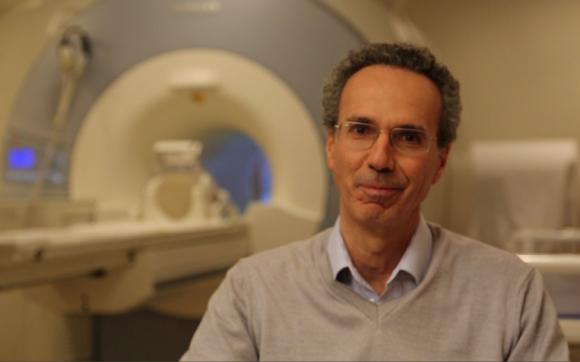With a major new federal grant, Brown University has established a research center to study key questions in the neuroscience of attention and related behaviors. The COBRE Center for Central Nervous System Function will encompass five projects, each led by a junior faculty member with mentoring from a more senior professor, with the dual goals of better explaining the brain and generating potential new ideas for addressing disorders such as autism.
“Attention is a gateway to human behavior, normal or abnormal,” said Jerome Sanes, professor of neuroscience and a neuroimaging expert who will lead the new center, with help from deputy director Sheila Blumstein, the Albert D. Mead professor of cognitive, linguistic and psychological sciences, and John Davenport, associate director of Brown’s Institute for Brain Science. “There is a wide range of functions that depend upon attention,” Sanes said. “You can list many of them just by thinking about what you do every day, such as deciding where to go, what to eat, and remembering yesterday’s events.”
COBRE, which stands for Centers of Biomedical Research Excellence, is a program of the National Institute for General Medical Sciences that helps bolster research and mentoring of promising young faculty members.
The new NIGMS grant of $11 million over the next five years, including more than $2.5 million this year, will fund underlying research and administrative cores for the center and support these projects:
- Dima Amso, assistant professor of cognitive, linguistic, and psychological sciences, will study the development of visual selective attention, the process by which the brain focuses on what’s relevant instead of on distractions. She will look at healthy development and how it is disrupted in autism spectrum disorders. Mentor: Blumstein
- Dr. Wael Asaad, assistant professor of neurosurgery, will focus on how the basal ganglia integrates sensory information from the cortex and motivational information from subcortical structures to generate learning. Mentor: John Donoghue, neuroscientist, engineer and Henry Merritt Wriston Professor
- Dr. Eric Morrow, assistant professor of molecular biology, cell biology, and biochemistry, will use a combination of genetics, neuroimaging, and psychiatric diagnosis techniques to determine whether autism patients with significant levels of obsessive-compulsive behaviors have a unique subtype of autism. Mentors: Sorin Istrail, professor of computer science, and Dr. Steven Rasmussen, professor of psychiatry and human behavior
- Joo-Hyun Song, assistant professor of cognitive, linguistic, and psychological sciences, will study how multiple neural systems in the brain work together when someone selects one target over distractors such as deciding to pick up a one object vs. another that differs in color. Mentor: Sanes
- Michael Worden, research assistant professor of neuroscience, will examine cases in which the brain must adapt to visual stimuli that conflict in that they seem to call for incompatible behavioral responses (such as arrows pointing in opposite directions). He will look at the effect of such adaptation on visual processing. Mentor: David Sheinberg, professor of neuroscience
Sanes said the research core, led by Joseph Hogan, professor of biostatistics, will focus on developing methods and protocols for experimental design and analysis and will serve as a resource for helping brain science investigators across campus and Brown’s affiliated hospitals to plan new studies and analyze collected data.
With the new grant, the projects are now beginning and the cores are starting up, Sanes said. Some of this year’s money will be used to acquire new research equipment such as eye-tracking systems and noninvasive neural recording equipment, such as EEGs. A portion of the funds will also go to bolster the University’s OSCAR computing cluster.
Overall, Sanes said, the grant and new center provide the resources to build Brown’s foundation for future neuroscience research in health and brain disorders.
“For the University this provides a very important bridge for junior investigators to jumpstart their careers,” he said. “It’s also important for Brown in that it provides a focal point for the further development of human neuroscience.”
It is indeed a new center of attention.
The project is supported by an Institutional Development Award (IDeA) from the National Institute of General Medical Sciences of the National Institutes of Health under grant number P20GM12345.

